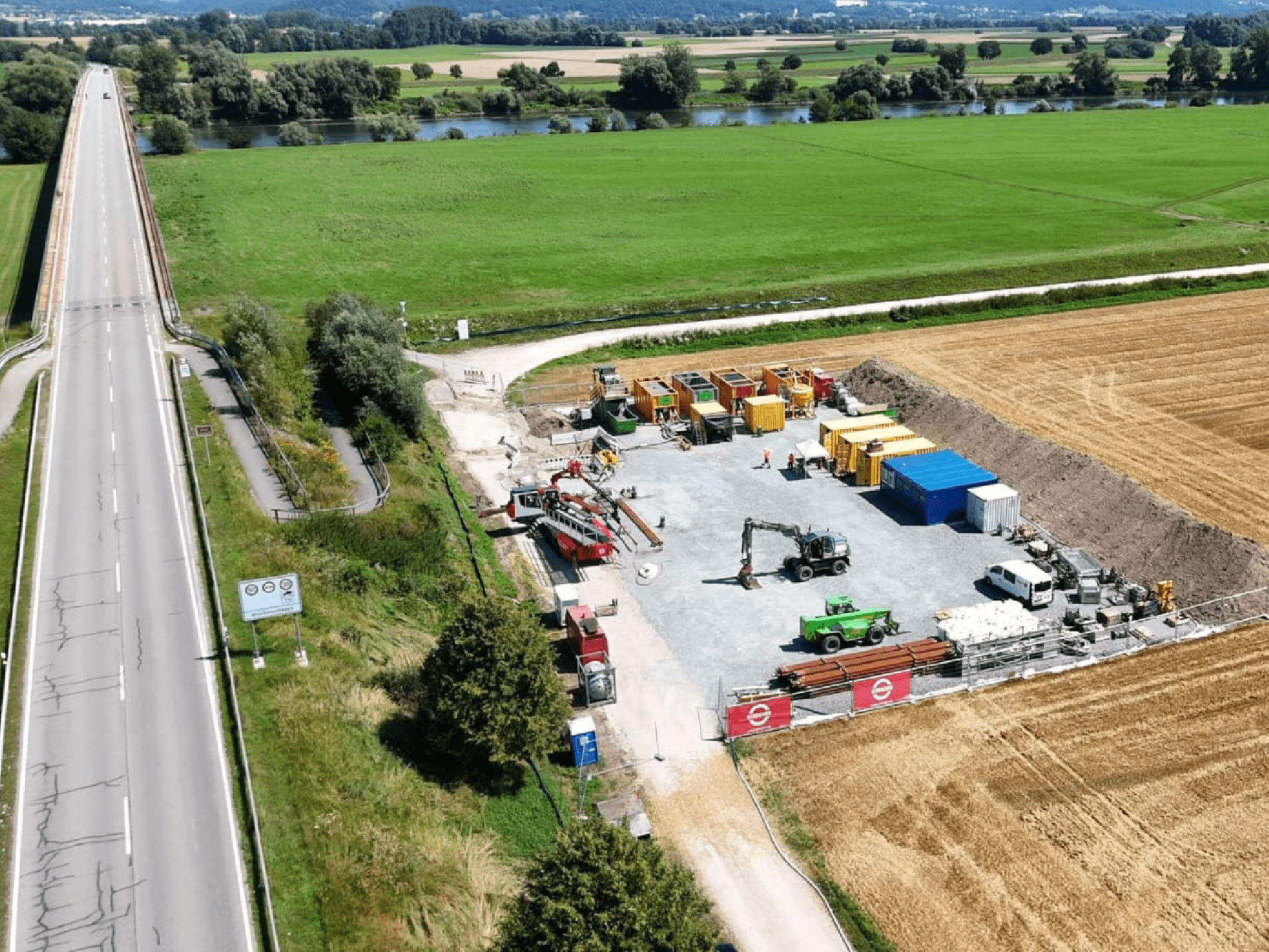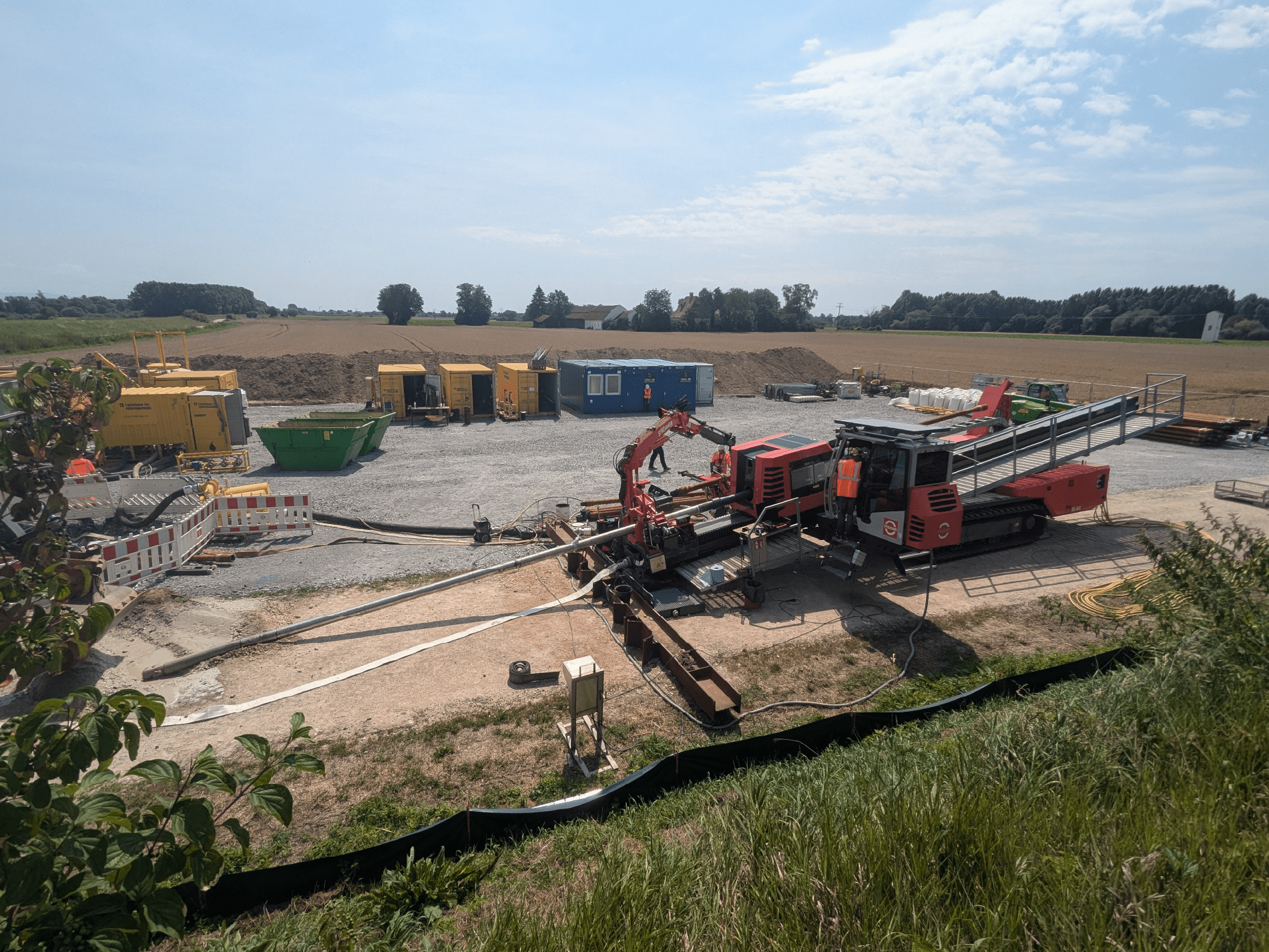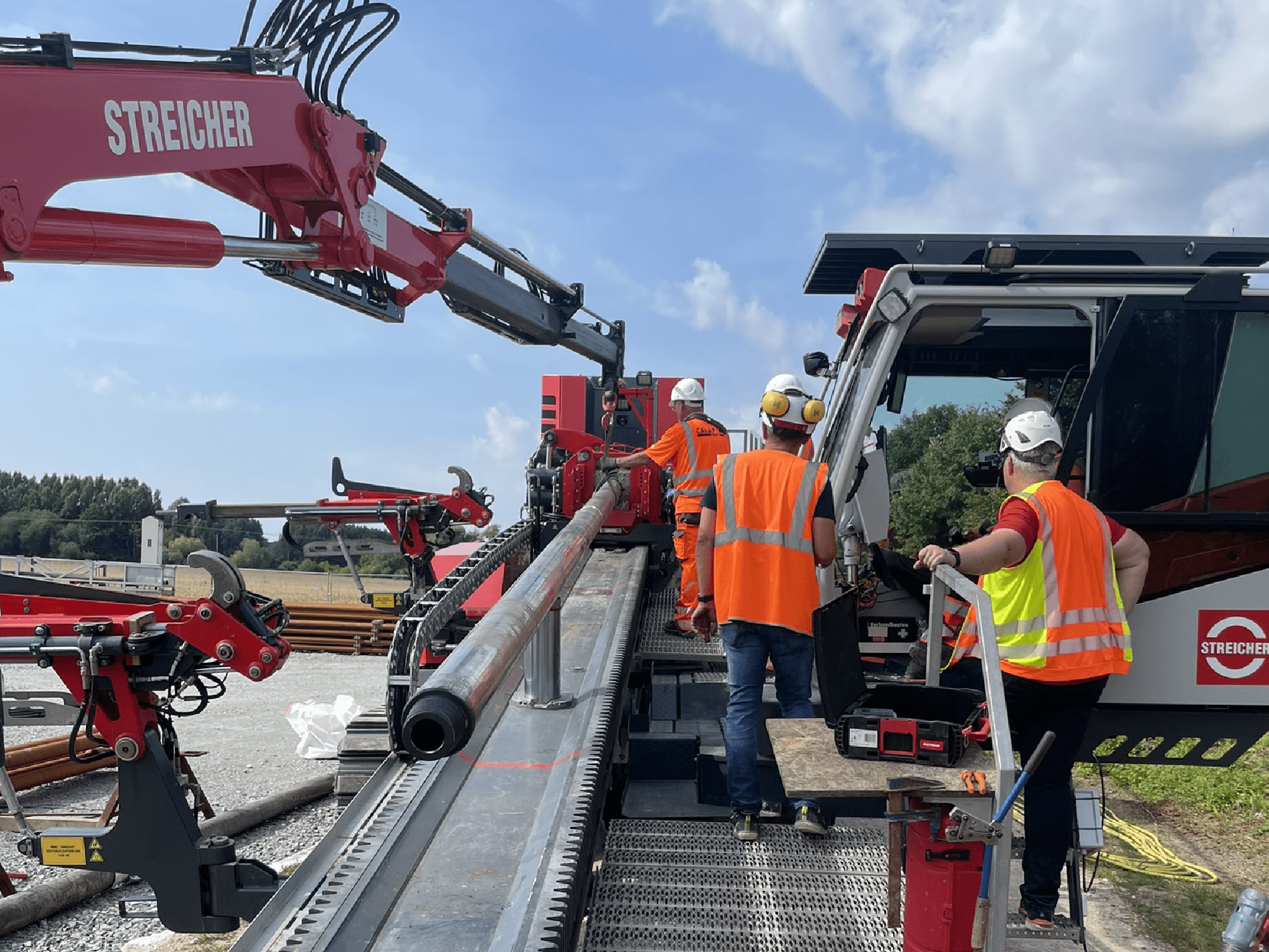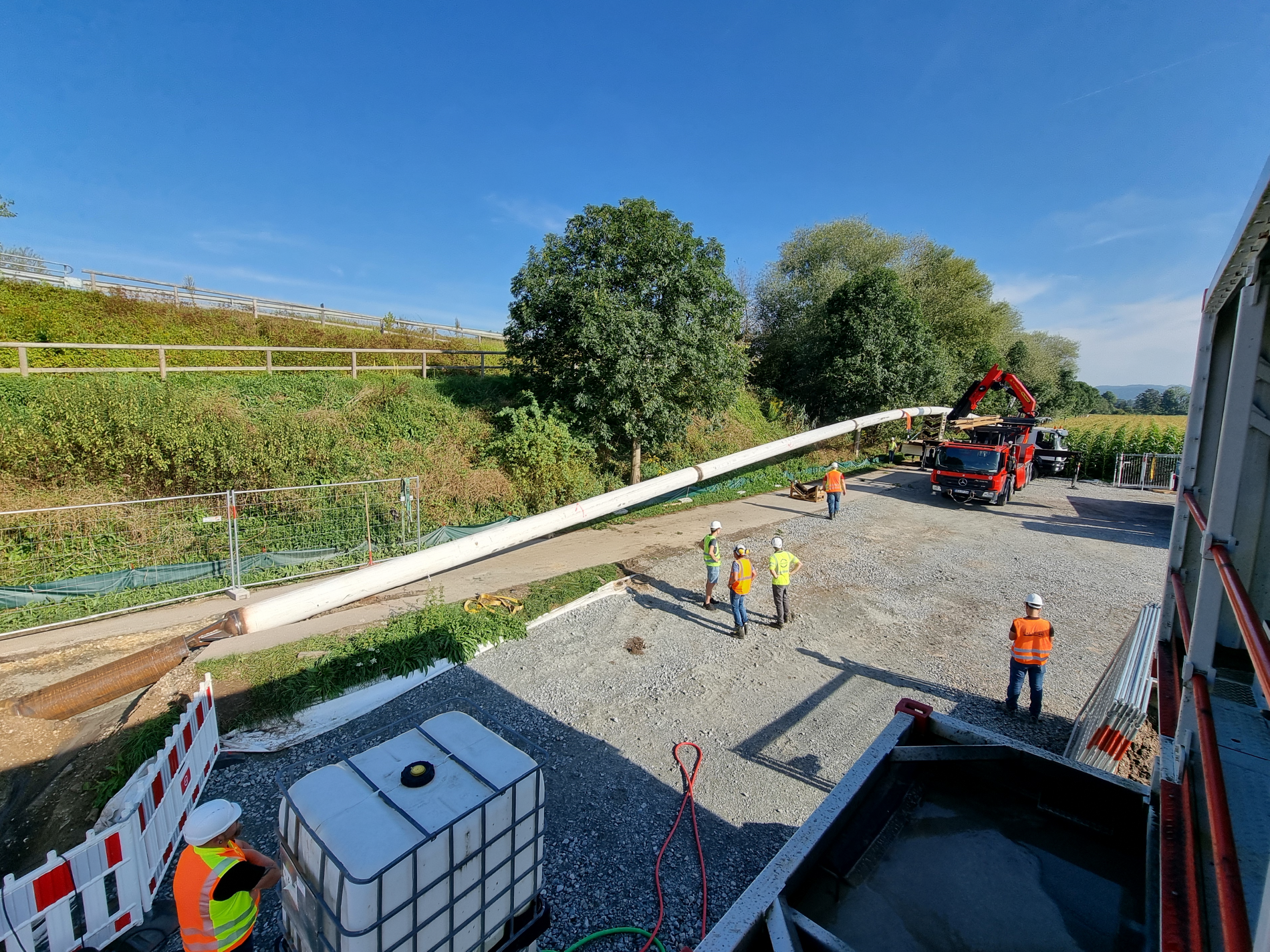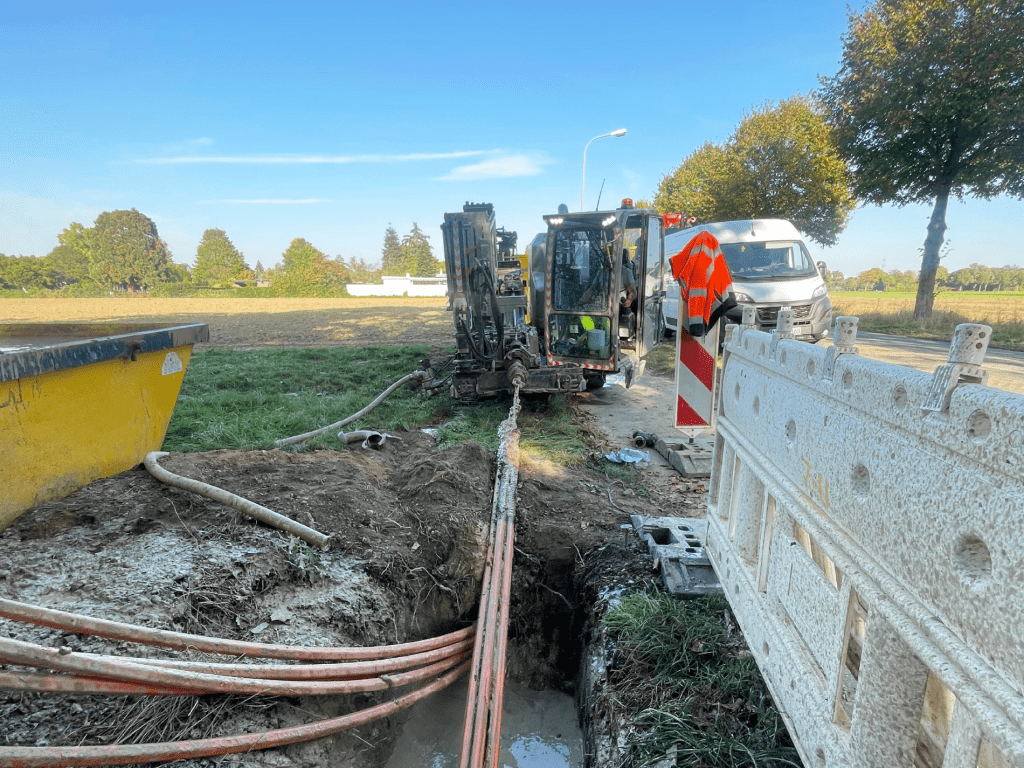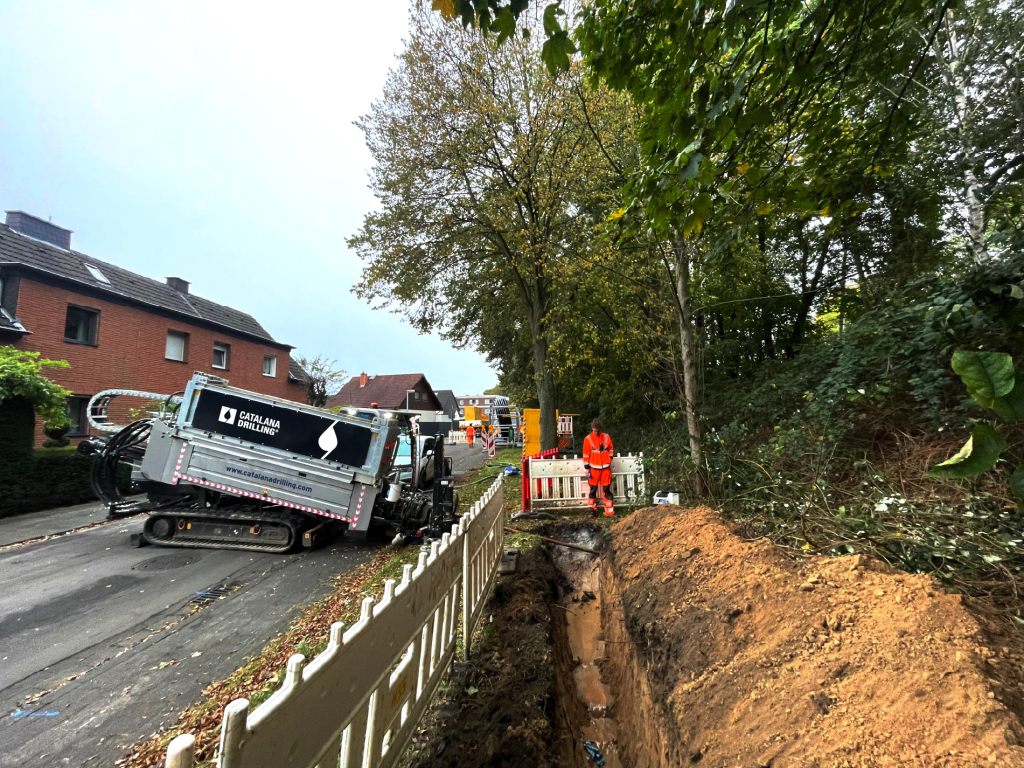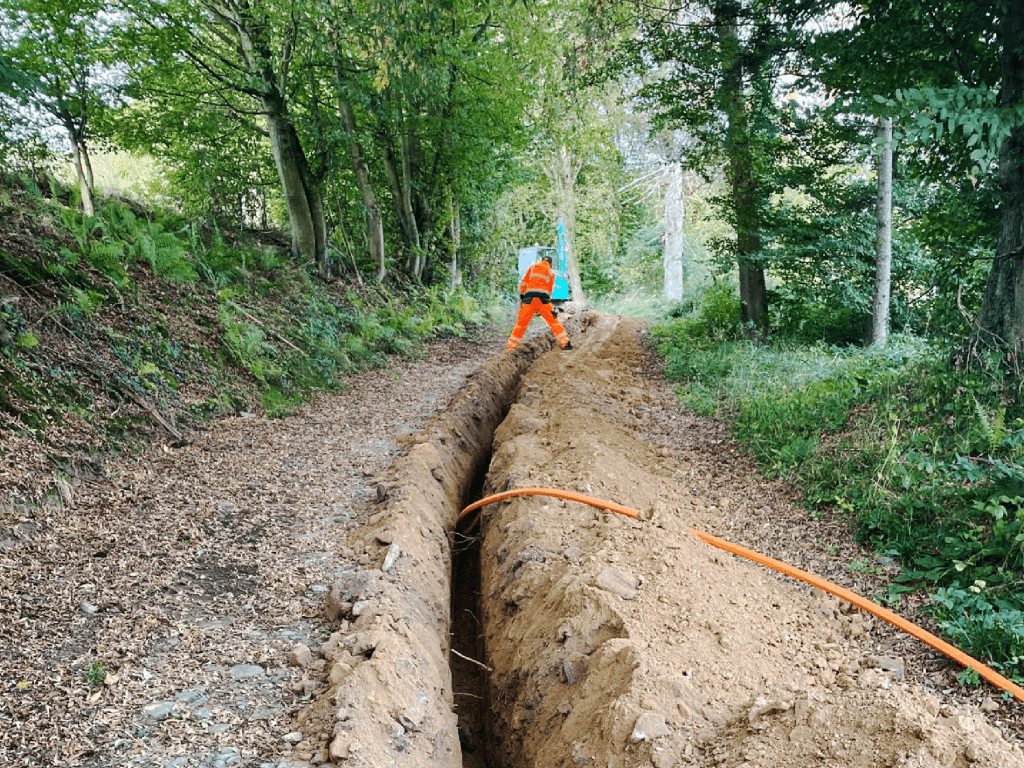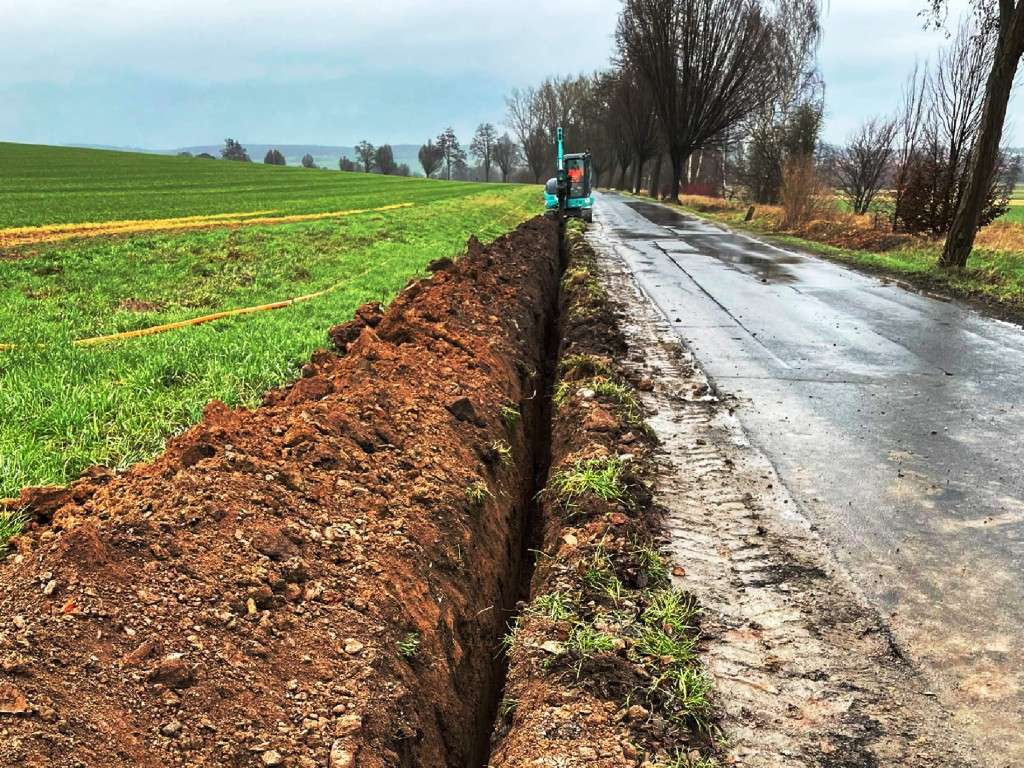Horizontal Directional Drilling
Water infrastructure in Wörth an der Donau, Baviera
Date
June - August | 2024
Type of installation
Water
Pipe
Steel
Drilling length
623 m
Soil
Class 3 and 5
Location
Donau
Modernisation of the Water Aqueduct in Wörth an der Donau Crossing the Danube River with a 625m Horizontal Directional Drilling.
Project Features
The project in Wörth an der Donau, carried out in collaboration with Streicher, aimed at crossing the Danube River through a 623-metre-long and up to 9.5-metre-deep drilling, where a Ø500 mm steel pipe was installed.
The ground, classified between class 3 and 5 with medium-high resistance materials, required highly precise technical control to guarantee crossing stability, structural safety, and the overall success of the project.
Drilling Method: Horizontal Directional Drilling (HDD)
To protect flora and fauna and to ensure a project with minimal environmental impact, we opted for Horizontal Directional Drilling (HDD).
This method is characterised by minimal environmental disturbance, preservation of biodiversity, reduction of noise levels, and faster execution, ensuring greater efficiency.
Aqueduct Modernisation
The work executed in Wörth an der Donau has provided a key and beneficial improvement for the city, focusing on upgrading the local water aqueduct infrastructure. It guarantees a safer and more sustainable drinking water supply for all residents.
Moreover, this modernisation strengthens the region’s water resources and improves resilience against increasing demand and climate change challenges.
Commitment and Innovation in every drilling
This project reflects our strong commitment to innovation and sustainability by applying techniques such as Horizontal Directional Drilling.
Coordination among engineering, logistics, and environmental protection teams was essential to address the project’s complexities and achieve success.
At CATALANA DRILLING, we remain committed to developing environmentally responsible infrastructure that meets current needs while preparing communities for future challenges.
